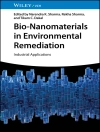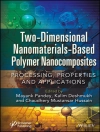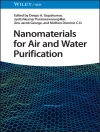Texturing surfaces at micro- and/or nano-scales modifies the interactions of liquids and solids. This book is a summary of the state of the art concerning the development and use of micro/nano-technologies for the design of synthetic liquid repellent surfaces with a particular focus on super-omniphobic materials. It proposes a comprehensive understanding of the physical mechanisms involved in the wetting of these surfaces and reviews emerging applications in various fields such as energy harvesting and biology, as well as highlighting the current limitations and challenges which are yet to be overcome.
Tabella dei contenuti
1. Nanotechnologies for Synthetic Super & #8232;Non-wetting Surfaces.
2. Wetting on Heterogeneous Surfaces.
3. Engineering Super Non-wetting Materials.
4. Fabrication of Synthetic Super& #8232;Non-wetting Surfaces.
5. Characterization Techniques for Super & #8232;Non-wetting Surfaces.
6. Emerging Applications.
Circa l’autore
Vincent Senez is Head of the Microtechnologies and Microsystems Department at the Institute of Electronics, Microelectronics and Nanotechnologies, University of Lille, France. His current areas of interest cover liquid-surface interactions, droplet-based microfluidics and electrical biosensors for real-time, label-free monitoring of bio-cellular systems.
Vincent Thomy is Assistant Professor in the Bio MEMS group at the Institute of Electronics, Microelectronics and Nanotechnologies, University of Lille, France. His research is focused on electrowetting-based digital microfluidic microsystems, the interaction of liquid micro-droplets with textured surfaces, and the design and fabrication of bio-microsystems for in-vitro analysis (point-of-care diagnostics applications).
Renaud Dufour is a Post-doctoral Fellow at the Max-Planck Institute for Dynamics and Self-Organization in Göttingen, Germany. His research is focused on the development of liquid-repellent super-oleophobic surfaces and the characterization of wetting phenomena.












